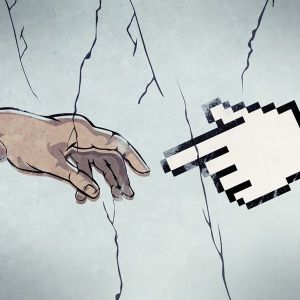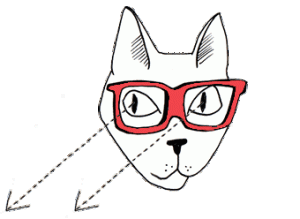In honour of receiving my unofficial final lecture for RTA103 Digital Media Production at Ryerson today, I’d like to take a gander at what this course has meant to me. Given that this blog is structured around RTA103, I thought it would be fitting to give a proper send off.
So let’s start by kicking it old school, shall we?
Discovering Design
I’ve always been the type of person to comment on appealing colour palettes and beautiful symmetry. But I could never have pinpointed the origins of a style, or how it was all pieced together.
RTA103 schooled me, hard. Design is a process. I learned about some of the greats–Saul Bass, Alex Steinwess, Shepard Fairey–and even these designers were influenced by the design of eras past. I don’t understand design in terms of fragments anymore. It’s a part of an interconnected system of art, culture, history and narrative. And it’s up to us, as the new generation of designers, to reflect, remix and innovate.
Clockwise from top left: 1961 One, Two, Three by Saul Bass, Make Art Not War poster by Shephard Fairey, Frankie Carle- At the Piano, label: Columbia Design, by Alex Steinweiss.
Digital Media Production taught me to see design in a new way. Now everything looks like CRAP. And I mean that in the best possible way. I’ve retrained my eyes to see contrast, repetition, alignment and proximity. I love looking at a great design and being able to pinpoint what is visually pleasing about it.
Finding My Style
My style is still a work in progress. But that’s how all design works, you know? It starts with a lot of incubation. Don’t get me wrong, perspiration works its way in there, but that comes afterwards.
I’ve played around with a handful of approaches during my time in RTA103. I’ve done digitally drawn, photo-based, illustration-based and digital animation work. I’ve got a (mostly paper) stop motion piece in progress. I’ve enjoyed working within all of these realms.
One thing I have discovered about myself is that I like to play in the gap between analog and digital. I was worried about doing digital design because I really enjoy all things tactile and tangible. This course opened my eyes as to the work that can be done when you’re more of an analog thinker. It’s innovative stuff, even if it isn’t steeped in technology at the core. Perhaps especially because of that.

Analog vs. Digital by Nick Schmidt. Source.
There’s so much to work with when you have the analog and digital worlds at your fingertips. The Information Age presents us with design, past and present, and beckons for us to craft the future. I don’t have all the answers about my style, but I feel compelled to search for them.
Sparks of Imagination
This course reignited my creativity in a major way. The more design I saw, the more ideas began to spawn in my brain. I really enjoyed the way that the course introduced me to a diverse range of artists.
The topics covered in class made me think about the role design plays in my life. There are so many small elements that make up the way I experience the world everyday. I didn’t even realize how much Helvetica I’d been staring at all this time.

In an article by Sam Berlow. Campaigns from Home Depot, Kohl’s, J.C. Penney, and Gap. Found here.
This knowledge has been integral to bridging my creative block. After the onslaught of essays and testing in high school, I lost touch of my artistic inclinations. I’ve always valued creativity very highly, so it thrills me to return to a place of creation. I took art in ninth grade and then just ‘couldn’t find the time’ to exercise my designer’s eye.
RTA103 pushed me to think differently and to rediscover and redefine my analog art skills. And, of course, to explore the new environment of digital design. But I couldn’t have done any of that without the ideas that took root thanks to RTA103.
Self-Improvement
I’ll never forget the first RTA103 lecture, because it taught me what makes a good liar.
No, really. But it just so happens that the same traits that make up a fabulist also contribute to fabulous design. Think about it. You have to:
- Gain trust
- Keep things simple
- Maintain a cohesive narrative
- Know your audience
So I walked in to my first lab with the best lie I could concoct: I know exactly what I’m doing. Fake it ’til you make it, I thought.

An accurate depiction of me at my first lab class. Source.
I’m glad I came into the course with that kind of enthusiasm, even if it was backed by apprehension. To be honest, I’d never laid a cursor on Photoshop or Illustrator, let alone After Effects. And they were mighty intimidating. Heck, they still are. The tools have tools on there. And then they mate and make wacky hybrid tools (trust me, that’s totally how it works).
Joking aside, I had never tried the software mostly out of fear; fear of the unknown, and more than anything, fear that I couldn’t figure it out on my own. I am so glad I was forced to face that fear. I have so much to learn, but now I realize that my biggest barrier to entry as a designer is myself.
There are still vast amounts of uncharted territory across the mystical landscape that is my copy of Adobe Creative Suite. But this course has given me the power and confidence to traverse it. That doesn’t mean it will be an easy journey–goodness knows how long it took me to create the tufts of grass in my album cover on Illustrator–but that doesn’t mean it’s not worth it. My sense of accomplishment when looking over my projects has been motivation enough to go on.
Parting Gifts
This course provided me with so many important skills, from how to mask an image to how to choose the right font for the feel I’m going for. I value both the technical and theoretical skills I’ve developed. I am most grateful for the push to finally use digital design software, being the design technophobe I am. I think I would have given up if I didn’t have someone to guide me through it in the analog world (sometimes YouTube tutorials just don’t cut it).
The most valuable things I took away from this course is the motivation to take design into my own hands. The RTA103 project I’m most proud of is actually one that I didn’t complete for class at all. When my mom’s birthday rolled around this month, she insisted that the only thing she cared about was getting a card. I decided to design one myself, featuring her all-time favourite character (Snoopy, in his Joe Cool iteration). I made it rather quickly, and the artwork wasn’t all original. But it meant so much to her. It wasn’t something I ever would have attempted if I hadn’t taken RTA103.

Imagery from here and here. Not used for commercial purposes.
That funny little card got a lot of attention within our group of family and friends. I even got some hints about others’ birthdays that were coming up. It made me realize the power of design, particularly when it comes from the heart. It makes me want to design more and design better. ♦


